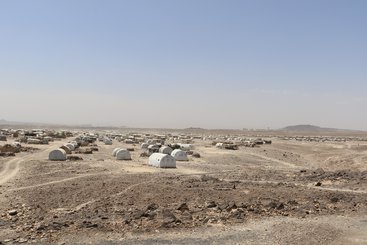Today, we know the least about public attitudes towards refugees and other migrants in the countries where the vast majority of the world’s refugees, and many of the world’s migrants, actually live.
85% of the world’s refugees live in low and middle-income countries (LICs and MICs). Nearly half of all migration flows are intra-regional, between LICs and MICs. Yet the disparity between data and analysis available on public attitudes towards refugees and other migrants in high-income countries (HICs) versus MICs, and LICs in particular, is stark.
In this blog we explain the reasons for this gap and why it needs to close – for the sake of more informed policy-making, practice and advocacy.
An uneven picture: the available data
Globally, we know more than ever about what people think about refugees and other migrants, and why. However, most research has focused on HICs like the United States, the United Kingdom and Germany. A recent analysis of over 100 academic papers on the topic found that 91% covered the US or Europe (see Twitter thread below). Many of the remainder cover countries such as Australia and Canada.
When it comes to LICs and MICs, the evidence base is far more limited – though not completely non-existent. Gallup’s World Poll (160 countries) and the World Values Survey (80 countries) both contain questions on migration, as do regional polls such as the Afrobarometer. Pew Global has collected data on attitudes in various MICs. There are also standalone country surveys, like those commissioned by the International Rescue Committee (IRC) measuring perceptions of refugees in East Africa.
But this data has serious limitations. Global or regional surveys often give a top-line view, like whether people would prefer more or less immigration, rather than digging beneath the surface to look at the complexities within attitudes. While more nuanced data is sometimes available, this varies between countries. In general, LICs are less well covered than MICs. For example, Kenya has more data than Uganda, despite the latter having a larger refugee population.
In some cases – particularly in countries hosting large refugee populations – smaller, often qualitative, studies have been conducted of host community perceptions, painting a more detailed picture. However, these tend to focus on areas where refugees are most highly concentrated, failing to measure broader attitudes nationally, despite their significance for policy-making.
Why the gap – and why does it matter?
As for polling on any issue, quality data is easier to source in HICs. Polling infrastructure is often more developed, and experienced partners more readily available. LICs and MICs may lack census data, and lower internet penetration may require more investment in phone or face-to-face surveys.
However, particularly when it comes to refugees and other migrants, there are also more fundamental questions of demand, political interest and funding. In HICs there is a much wider pool of actors willing and able to fund this kind of public opinion research, from government institutions and the media, to civil society and advocates. Perhaps unsurprisingly, these actors are most interested in opinions within their own, or neighbouring, societies.
Where there is interest in collecting data on attitudes towards migration in LICs and MICs, this tends to focus on understanding attitudes towards emigration. This reflects a distorted view of LICs and MICs as countries of origin for refugees and other migrants, ignoring the important role they play as hosts.
How to address the data gap
Addressing the data gap requires methodological innovation. Most importantly, it needs efforts to tap into latent demand for this evidence base, by building an understanding of why it’s worth the time, effort and resources. Not least because:
- If host country governments had this data, they could enact policies more concretely grounded in public opinion.
- If advocates had this data, they could identify openings to push for these policy shifts.
- If practitioners had this data, they could use it to understand what works to enhance social cohesion and improve attitudes towards refugees and other migrants.
- If humanitarian and development agencies had this data, they could use it to shape investments to address pressures faced by refugee-hosting countries, and to inform diplomatic efforts.
We need a better picture of where this data could have the greatest impact, in order to prioritise investment. This could be decided based on numbers. For example, investment could be focused on developing an equally robust evidence base across the world’s five largest refugee hosting countries (all bar one of which are LICs and MICs). Alternatively, it could be prioritised in countries where national policy frameworks pose the greatest barriers to refugees’ and others migrants’ inclusion, such as in Kenya or Bangladesh.
Ultimately, efforts are needed to bring together those who could fund this research, those who can carry it out, and those who could ultimately use it. We are doing this as part of ODI’s work with the IKEA Foundation on public narratives and attitudes to migration.
Next week we are convening a discussion with donors, policy-makers, civil society, and the private sector about the implications of the data currently available in East Africa. We hope this will help to join up some of the siloes we often see in this area of work, bringing policy-making and programming together with attitudinal data.
Critically, better data could help inform migration and refugee policies in LICs and MICs with an accurate understanding of what host populations actually think – instead of making assumptions about this.
If this data is important in HICs it’s infinitely more so in LICs and MICs, given their disproportionate role as hosts to refugees and other migrants.




